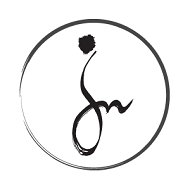NO PAIN MORE GAIN!
What if I told you there’s a method that uses body movements and renders you with immediate benefits, reduction of pain, increased flexibility and strength and improved focus? What’s more, you DON’T need to practice the movements as you do in the gym or in physical exercises and you DON’T need to make efforts to get better. Sounds too good to be true?
Let’s do a little experiment: stand in front of a wall and start pushing it with your palm. Each time, push and let go. How long can you push the wall? 5 seconds? A minute? Five minutes? How long before you will start feeling discomfort and pain in your wrist, shoulder, neck?
Now try to push not by using force but with attention to what happens in the rest of your body: the push should be concrete but light, so the force that you invest into the wall returns to your body and is transformed into movement. Can you feel the elbow opening? The shoulder moving? The opposite hip? The feet on the ground? How long could you continue to push the wall with this attitude? You’ve exchanged effort with attention to details and awareness to yourself.
Does this experiment give you a different insight into the new possibilities when working with less effort and more awareness?
This aptitude towards effort is unique to humans in the animal kingdom. You don’t see a lion going for long runs to exercise his ability to chase a gazelle. You don’t see the gazelle doing that either, although it needs to be very fast to escape from the lion. They exercise their abilities through play and in real-life situations that require immediate response. If they exerted all their energy in exercise, they would be to tired and unable to catch a prey or avoid becoming a prey.
In most parts of the modern world the mentality of ‘no pain – no gain’ dominates. This mentality leads us to a loophole. When we effort, we lose our sensitivity to details. We miss out on warning signs when there’s a problem, the beginning of an injury or a dangerous situation that requires attention. All our attention is directed to our achievement, and we miss on the details.
Imagine that you are in a dark room. Someone lights a candle. You would be able to see that light straight away. But if that candle was outside where the sun is shining brightly, you would probably not notice the light that the candle flame is producing, since the stimulus level is much higher.
This means that when we increase our efforts, our sensitivity decreases proportionally, and we lose our ability to detect changes and choose alternative ways of action.
In Feldenkrais, we use slow and gentle movements, not because we can’t go harder and faster. We aim to improve our abilities, to enhance the perception and connection with our body. Once a movement is performed with ease, it can be done fast and with power.
Each one needs to decide for themselves what way they want to go: towards self-improvement or in the opposite direction?





